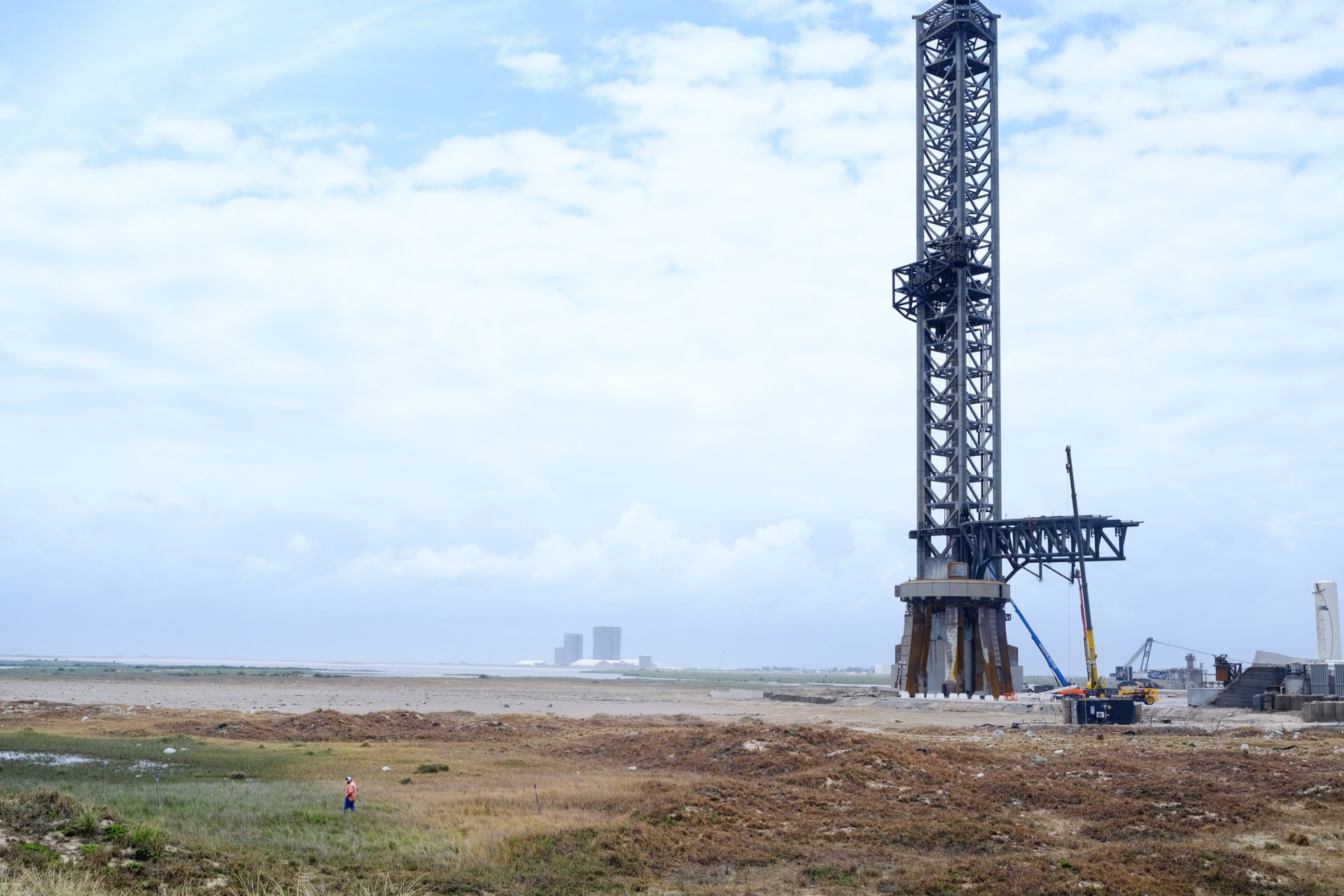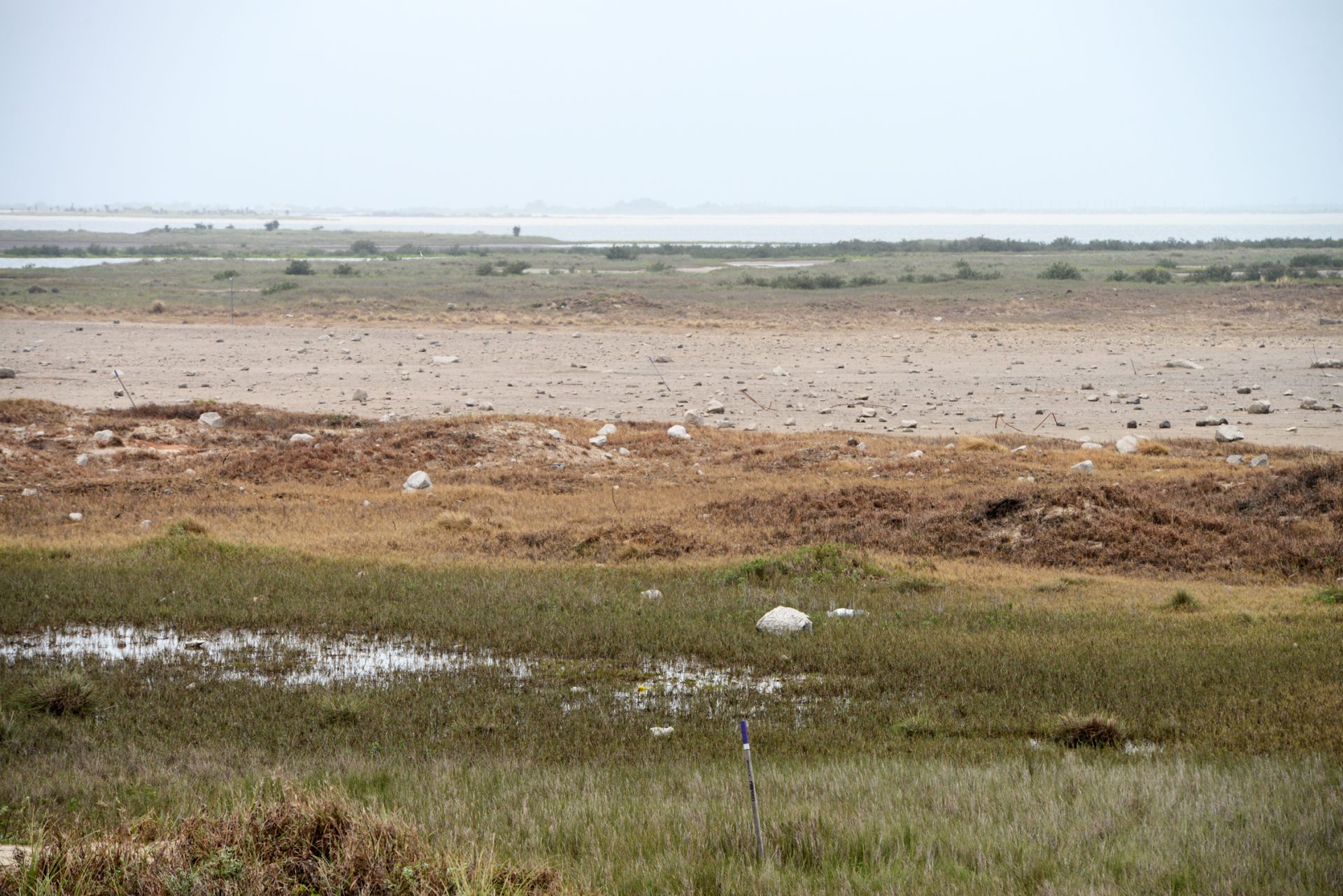|
Only have a minute? Listen instead
Getting your Trinity Audio player ready...
|

SpaceX appears to have seriously miscalculated how well its orbital launch pad would hold up during the inaugural launch of its Starship-Super Heavy from Boca Chica/Starbase on April 20.
The Super Heavy booster rocket’s 33 engines together are capable of producing more than 16 million pounds of thrust, twice as powerful as the Saturn V rockets used for NASA’s Apollo lunar missions in the late 1960s and early 1970s.
The blast from last week’s liftoff obliterated the pad beneath the rocket, gouging a deep crater and sending large and small chunks of heat-resistant aggregate concrete hurtling in all directions. Vertical propellant tanks near the pad were left badly dented. Flying concrete tore through lightweight metal structures near the pad, some of it coming to rest on the opposite side of S.H. 4.
Aerial drone footage of the launch posed by the Washington Post shows leaping plumes of sand and water erupting as projectiles strike the dunes, beach and surf at Boca Chica just east of the launch site. A visit to the beach during high tide on April 24 turned up variously sized concrete missiles as far as 1,300 feet from the launch site, and the drone video appears to show rubble landing in the water another 150-200 feet away.

It didn’t have to be this way.
As SpaceX founder and CEO Elon Musk tweeted the day following the launch, “3 months ago, we started building a massive water-cooled, steel plate to go under the launch mount. Wasn’t ready in time & we wrongly thought, based on static fire data, that Fondag would make it through 1 launch. Looks like we can be ready to launch again in 1 to 2 months.”
SpaceX test-fired 31 of Super Heavy BN7’s 33 liquid-oxygen and liquid-methane fueled Raptor 2 engines on Feb. 9 (two of the engines failed to ignite). Fondag is a type of high-resistance concrete engineered to endure extreme conditions — to a point.
“Still early in analysis, but the force of the engines when they throttled up may have shattered the concrete, rather than simply eroding it,” Musk tweeted on April 22. “The engines were only at half thrust for the static fire test.”

The stretch of beach in question is managed by the Texas Parks and Wildlife Department’s State Parks division. Regional Director Reagan Faught had not responded to a request for comment by press time.
Joe Barnett, U.S. Fish and Wildlife Service deputy refuge manager for the Lower Rio Grande Valley National Wildlife Refuge, the Boca Chica portion of which starts about a mile south of the launch site, said none of the debris landed on refuge property, but that he believes SpaceX intends to retrieve the larger pieces — including those that could contain steel reinforcing rods — from the dunes, beach and water.
“They are doing some recovery efforts,” he said. “I guess they’re in the process. They’ve been going after the metallic stuff. (That) has been their focus right now, heavy metal objects and stuff. … Probably the small (concrete) stuff, like stuff the size of your hand, it’ll probably be absorbed by the sand. But the big blocks, they’re definitely going to retrieve those.”


Barnett said the company has been “pretty good” about recovering debris created by past anomalies — explosions — involving Starships SN8 in December 2020, SN9 in February 2021, and SN11 in March 2021, for instance. The April 20 first orbital test flight attempt ended 28 miles over the Gulf of Mexico and nearly four minutes into the flight, when Starship’s onboard Flight Termination System was intentionally activated after the rocket began to veer out of control.
Considering the ravages inflicted on the launch site by the first Starship orbital launch attempt, SpaceX likely will want to reconsider its approach, Barnett said.
“I think it did damage the (launch) tower, a few other things like that,” he said. “They’ve got to be rethinking, I’m sure, before the next one.”




